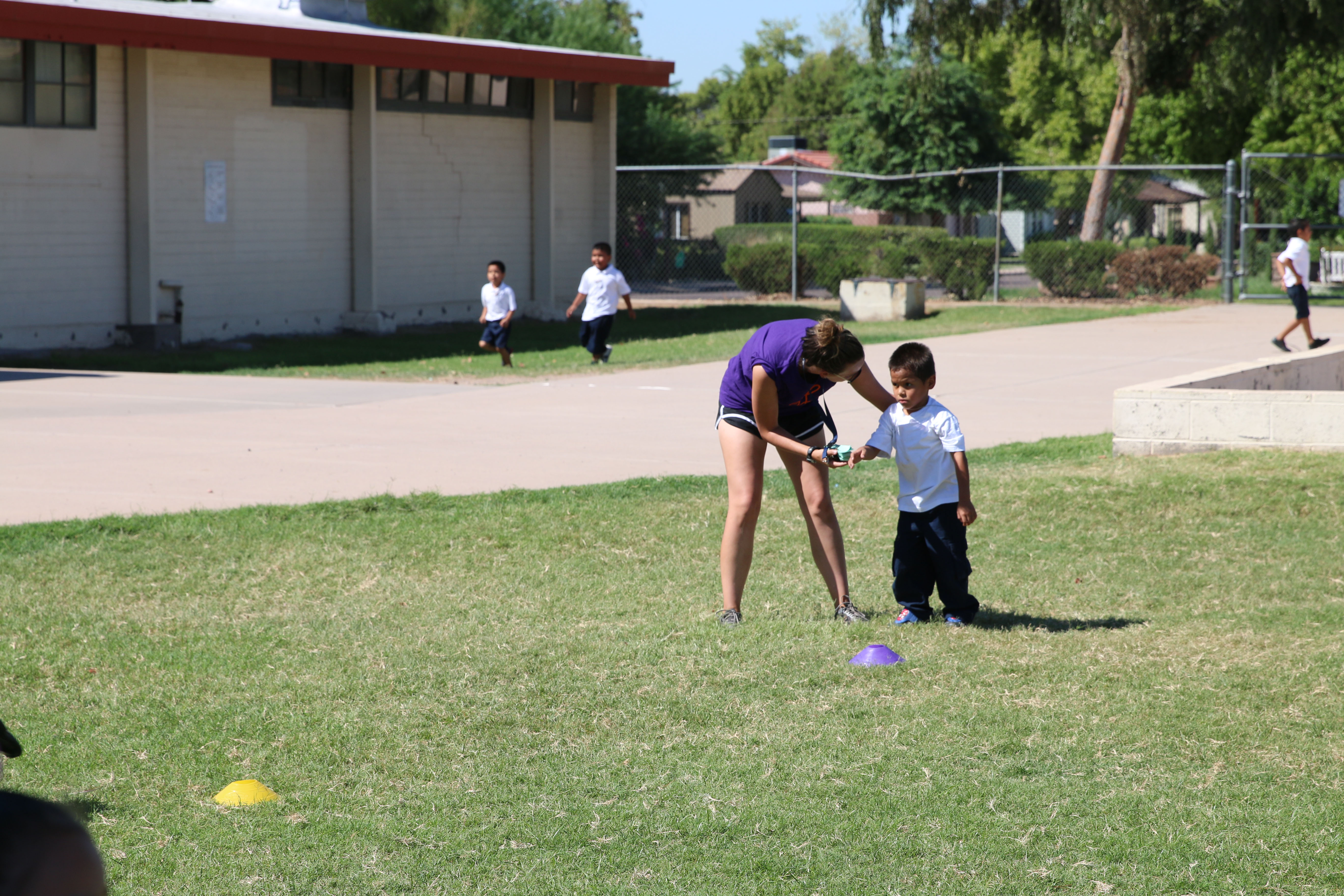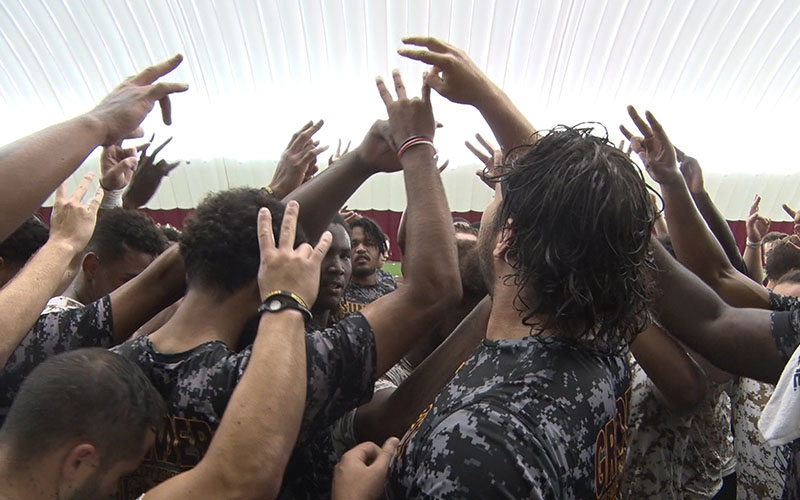Aug. 3, 2017
PHOENIX – Twice in the past year, high-profile hazing incidents have hit Valley high schools, requiring coaches and administrators to examine the culture and monitoring of their teams, according to interviews with coaches and experts.
“Your coach, role models, and team leaders can have a big effect on creating that culture in promoting or lessening the extent of aggression or violence,” said neuropsychologist, Dr. John DenBoer.
Eight members of the Paradise Valley football team were suspended for an alleged hazing incident prior to the 2016 season. Then in March, six Hamilton High School football players were arrested for a hazing incident. Three were charged with crimes, including sexual assault, against teammates.
The Front Line: Coaches
Around the Valley, coaches such as Pinnacle High School head football coach Dana Zupke, are reassessing their role.
“I still think part of my job is making sure kids understand what hazing really is, what it isn’t and being able to understand the difference,” Zupke said.
Zupke spoke openly about hazing and bullying and the type of environment he thinks should be instilled within schools and athletic communities.
“The biggest thing in the last year that we’ve tried to push internally in our program and at the school is the idea that it is your responsibility that if you see something that is inappropriate, it’s your duty to tell somebody,” Zupke said. “We realize how much exposure that we have to those types of liability situations and we want to address those as proactively as possible.”
He said he tries to instill a family-type environment within his team, one that emphasizes the importance of brotherhood and caring for teammates. That mentality also includes how players and coaches treat each other internally.
DenBoer, who specializes in sports performance therapy, said young athletes often don’t understand the difference between a “rite of passage” ritual and bullying or hazing.
“Hazing is bullying,” he said.

Dr. John DenBoer has experienced “rite of passage” rituals though playing on his men’s rugby team. He believes rituals turn into hazing and bullying when someone feels threatened. (Photo by Devin Conley/ Cronkite News)
DenBoer said his adult rugby team has a ritual in which a player drinks a beer from a rugby boot after scoring his first “try.”
“The difference between that example and actual hazing would be putting someone’s health in jeopardy or making them feel unsafe, scared, threatened or intimidated,” he said.
Arizona statutes define hazing as “any intentional, knowing or reckless act committed by a student, whether individually or in concert with other persons, against another student” that is committed in connection with initiation or membership within an education institution and that “contributes to a substantial risk or potential physical injury, mental harm or degradation or causes physical injury, mental harm or personal degradation.”
DenBoer outlines that identifying the difference between a harmless ritual and hazing should be clear.
“It’s not a rite of passage anymore, it then becomes a traumatic situation that one person or a group of people have imparted on another,” DenBoer said.
The state statute also requires that “every public educational institution in this state shall adopt, post and enforce a hazing prevention policy and the hazing policy shall be printed in every student handbook for distribution to parents and students.”
Prior to the 2016 football season, Paradise Valley’s team bonding trip to its camp in El Cajon, Calif., included a hazing incident. After a weeklong investigation by the El Cajon Police Department and the Paradise Valley Unified School District, hearing from nearly 60 individuals, eight players received seasonlong suspensions.
At Hamilton, Chandler Police and the Chandler Unified School District were alerted to details by a third party, who said that the allegations took place over a 17-month time period. The investigation is ongoing. Hamilton High administration would not comment on the case.
Who Should be Held Accountable?
Though Zupke said coaches need to be held accountable for these types of incidents, he also believes players need to fulfill their responsibilities to both their teammates and themselves. He said that when young men are a part of a group, they often have a strong sense of “we don’t rat” or, “we don’t tell on others.”
“I try to build that responsibility in my players so they know they can come and talk to me and share things with me,” he said. “At a certain point, the responsibility has to fall back on them.
“It’s important to create ways to give them an out to talk about certain situations.”
Rich Tomey, executive director of Phoenix Coaches Alliance, agrees that students should be held responsible.
“You have to create those athletes who are able to step up and be the guys that call you out when things aren’t looking right,” Tomey said.
Tomey acknowledges that regardless of the level of athletics, coaches are the ones who have to really know and understand, and build a positive culture within their team. For him, the coaching aspect is exceedingly important, but building that leadership is integral.
“We’re trying to do our part,” Tomey said. “But, it’s also a matter of the (coaches) we’re working with to buy in as well.”
Voices on social media and in Valley communities have expressed their own views as to who should be held accountable.
“The entire coaching staff should be fired. All kids involved should be expelled,” Cedric Alexander posted to Facebook, in reaction to the Hamilton hazing allegations. Hamilton coach Steve Belles was placed on home reassignment pending the investigation and will not coach the team this year.
“Schools can only do so much,” Tracey Clark posted. “Respect for others has to start at home!”
For coaches and experts like DenBoer and Tomey, accountability is the key to being able to solve these issues. They feel that accountability also requires the ability to be open and willing to make changes to a system that has perpetuated such behaviors.
“No one can hide from the issues,” Tomey said. “There’s parents, players, coaches… everybody’s watching. When things do happen, accountability has to be the number one priority.”
“(They) have to figure out a way to change the culture of their team and the one’s that don’t want to change are the one’s that need it the most.”
That accountability starts with communication, the experts said.
“Communication with parents more than anything is so important,” North High School head football coach Bernie Busken said. “I think the biggest thing is making time to sit down with parents to let them know that you want what’s best for their kids, you want them to act right, you want them to make their grades and you want them to be good citizens.”
They also feel that the communication should extend to other coaches within the team.
“I’ve made it very clear to my coaches that you need to bug me,” Zupke said. “There’s no incident that is too small and I need to always know about it.”

A Playworks coach talks with a student at Loma Linda Elementary. (Photo by Kevin Jimenez)
Effect on the Greater Community
Since 2006, 49 states have enacted legislation aimed at preventing bullying and protecting students, according to the National Conference of State Legislatures.
“Children who are bullied in high school are more likely to drop out,” Nicole Stanton, a former first lady of Phoenix and anti-bullying advocate, said. Stanton spearheaded a campaign in 2012 – Stop Bullying AZ – that has worked to introduce more laws in Arizona legislation in hopes of creating better awareness around the issues of bullying in state schools.
A recent study done by PlayWorks — a non-profit child development organization — explained the future outcomes of students who experience bullying and other negative factors at a young age.
When accumulating a variety of factors, children are given a competence score ranging from zero to five beginning at the kindergarten level. PlayWorks saw dramatic differences between children who scored even one point difference.
More than 65 percent have a higher chance of being arrested, more than 80 percent had a higher rate of using marijuana, and more than 80 percent had a higher chance of being on a waiting list for public housing.
All of these factors contribute to Arizona’s dropout rate, according to PlayWorks.
The number of dropouts in the state of Arizona also impacts the local economy. Each dropout results in more than $400,000 in lost economic activity over a lifetime, according to a report by the Arizona Mayor’s Education Roundtable. This includes lost earnings, increased health care, crime-related costs, lost economic productivity and tax revenue.
According to that same report, this resulted in $7.6 billion in lost economic activity in 2016.
“You either pay now or you pay later and quite frankly, I’d rather pay now,” Nicole Stanton said.
“I think it’s the right thing to do from a moral perspective but I also think it’s the right thing to do economically.”



Leave a Comment
[fbcomments]